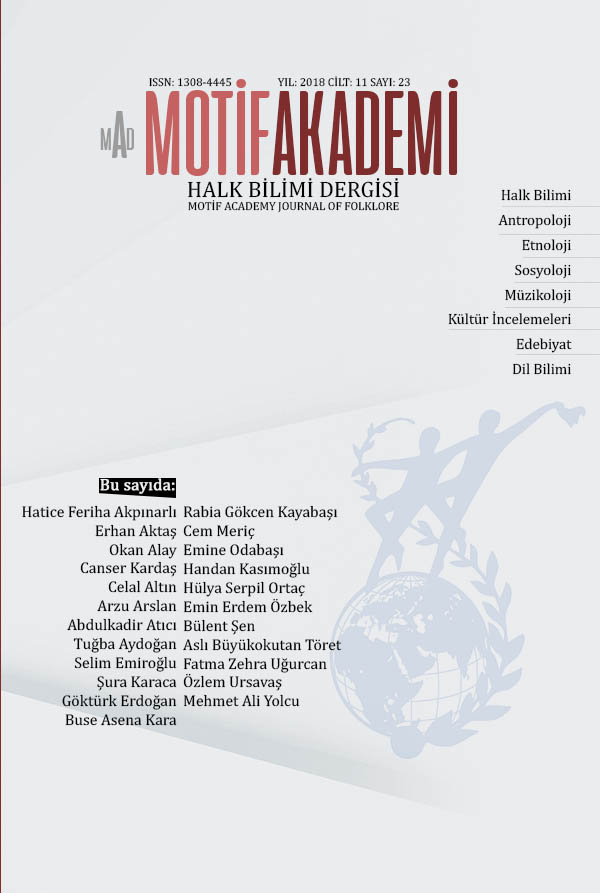ANADOLU VE KAFKASYA KAVŞAĞINDA GELENEKSEL BİR YILBAŞI KUTLAMASI: KALANDAR
A TRADITIONAL NEW YEAR CELEBRATION AT THE ANATOLIAN-CAUCASIAN CROSSROAD: KALANDAR
Author(s): Okan AlaySubject(s): Cultural history, Customs / Folklore, Evaluation research
Published by: Motif Halk Oyunları Eğitim ve Öğretim Vakfı
Keywords: Tradition; new year celebration; Kalandar; Anatolia; Caucasia;
Summary/Abstract: As in many geographies and cultures of the world, “new year celebrations” are held in forms different from or similar to each other at the scale of major calendars at the Anatolian and Caucasian geographies. One of these celebrations is the traditional “Kalandar” celebration. In this study, the relation of Kalandar to calendar, its origin, course, features are assessed and its importance in terms of folklore and folk culture are presented to attentions. In Kalandar celebrations ongoing for years, it is established that, despite many concrete and abstract values were subject to some changes and transformations, they maintained their existence and reached today. Many concrete and abstract values such as festivals, theatrical shows, gift exchanges, interesting costumes, melodies, folk dances, and manis sustain their existence as socio-cultural wealth during the celebration. In this context, many ancient folk beliefs and rituals find a living space. Associated with pagan items and human-nature-life concepts; rebirth, regeneration, abundance, joy, and sharing are frequently emphasized concepts/items. People are trying to establish proximity and to encourage sharing by exhanging gifts. “Karakoncolos” show almost identified with Kalandar during the celebrations is performed as a representation of the existence of goodness and evil, the battle between humans and supernatural beings, the reality of time and conditions. Eventually it is concluded that the continuation of Kalandar tradition which hosts many cultural values inside gains importance in a period in which modern world conditions comsume everything by assimilating. As it can be seen in our study also, it is presented to appreciations that Kalandar and beliefs and practices relating to it contain noteworthy information for many social sciences especially folklore and anthropology.
Journal: Motif Akademi Halkbilimi Dergisi
- Issue Year: 11/2018
- Issue No: 23
- Page Range: 96-110
- Page Count: 14
- Language: Turkish

